In today’s difficult hiring market, economic development organizations, cities, communities, and destinations face a unique set of challenges in attracting and retaining a skilled workforce. Shifting demographic trends, evolving educational paradigms, and changing cultural expectations have created a complex environment for economic growth. It’s something the Red Sage team has helped major employers navigate for 6+ years now – since pre-COVID 19 times.
Our agency has partnered with both global corporations and public-private entities to reach workforce, talent attraction, and recruitment goals using integrated communications and marketing. Our strategies have enabled manufacturing powerhouses to hire thousands of skilled workers amid sub-3% unemployment conditions and fierce competition. We’ve helped others to meet rapid expansion needs supporting new facilities.
Basically, we know what works in recruitment marketing AND what doesn’t. So let’s talk a little bit more about how you can find success if this is a hot topic on your radar…
The Shifting Dynamics of Workforce Attraction and Retention
It’s important to understand where things stand for our workforce in 2024. It’s also important to be realistic about the “new status quo” facing HR managers, companies of all sizes, and communities.
Demographic Shifts: As the United States experiences significant demographic shifts, with a growing emphasis on a diverse and multicultural workforce, destinations must adapt to changing preferences and expectations. Attracting talent from different age groups and cultural backgrounds requires a nuanced approach to advertising, marketing, and outreach that aligns with the evolving fabric of society.
Educational Evolution: The educational landscape is undergoing a transformation, with an increasing emphasis on remote learning, online certifications, and alternative education pathways. Economic development organizations need to align their strategies with the changing educational preferences of the workforce, ensuring that opportunities are accessible and appealing to individuals with diverse learning backgrounds. Employers need to clearly communicate a commitment to on-the-job training and culture.
Cultural Considerations: Workplace culture is a critical factor in attracting and retaining talent. The younger workforce, in particular, places a high value on workplace diversity, inclusion, and a sense of purpose. Destinations need to foster a community environment that reflects these values and offers a supportive ecosystem for personal and professional growth. Political leaders must also be engaged with private-sector industry; working together with educational entities to make sure all the “pieces of the puzzle” are in place for success.
The Role of Communications and Marketing Agencies in Addressing Workforce Challenges
Strategic Brand Positioning
Challenge: Destinations and employers often struggle with the same thing – establishing a compelling brand positioning that resonates with the workforce.
Solution: Partnering with a communications and marketing agency with expertise in community marketing enables destinations to strategically position themselves. Agencies can conduct market research, identify unique selling points, and craft a brand narrative that appeals to the target workforce. This includes showcasing cultural diversity, educational opportunities, and community initiatives that align with evolving values.
Integrated Talent Attraction Campaigns
Challenge: Attracting a diverse and skilled workforce requires a multifaceted approach that goes beyond traditional recruitment methods. Most experienced HR leaders are well aware of this by now, but sometimes struggle to see “what’s possible” when it comes to leveraging modern media tactics.
Solution: A specialized communications and marketing agency can develop and execute integrated talent attraction campaigns. These campaigns leverage digital platforms, social media, and targeted content to reach potential candidates. By highlighting the destination or company’s unique attributes, including cultural events, educational partnerships, and lifestyle offerings, agencies can create a compelling narrative that attracts the right talent.
Community Engagement Strategies
Challenge: Building a sense of community is crucial for retaining talent, but it requires strategic and sustained efforts.
Solution: Communications and marketing agencies specializing in community engagement can develop comprehensive strategies that are sustainable over time – even tailored to Diversity, Equity and Inclusion initiatives. DE&I is increasingly important when it comes to community engagement and recruitment. Successful Red Sage initiatives for partners have included deep community research in diverse demos, organization of local events, joint community initiatives, and facilitated networking opportunities. By fostering a sense of belonging and connection, destinations can enhance their appeal as long-term homes for the workforce.
Educational Partnership Programs
Challenge: Aligning economic development initiatives with evolving educational preferences can be complex.
Solution: Partnering with a communications and marketing agency experienced in educational outreach allows destinations to create tailored programs. These programs may involve collaborations with local educational institutions, the development of skill-specific training initiatives, and the promotion of alternative education pathways. By showcasing educational opportunities within the community, destinations become more attractive to a diverse range of potential residents.
Employer Branding and Corporate Culture Enhancement
Challenge: Creating a workplace culture that resonates with the workforce’s values requires intentional effort.
Solution: Communications and marketing agencies specializing in employer branding can assist destinations in enhancing their corporate culture. This involves showcasing diversity and inclusion initiatives, highlighting employee success stories, and communicating the destination’s commitment to a positive work environment. By aligning the employer brand with the aspirations of the workforce, destinations can boost their appeal as desirable places to work and live.
Digital Presence Optimization
Challenge: Establishing a strong digital presence is crucial, but many employers may struggle to effectively leverage online platforms. Recruitment in today’s marketplace goes way beyond posting open positions. Successful employers are deploying multi-channel campaigns that showcase their mission, values and culture.
Solution: Recruitment in today’s marketplace goes way beyond posting open positions. Successful employers are deploying multi-channel campaigns that showcase their mission, values and culture. This includes creating user-friendly hiring-specific websites, engaging social media content highlighting real employees, and targeted digital advertising campaigns to educate prospective hires.
Data-Driven Decision Making
Challenge: Employers and workforce development organizations can both face challenges in leveraging data to inform decision-making processes that support talent recruitment. It sometimes feels like there’s too much data. Other times not enough.
Solution: Partnering with a data-proficient communications agency can help you define KPIs, as well as key marketing metrics supporting them. At Red Sage, most initiatives in the talent attraction and recruitment space begin with a substantial analysis of demographic trends, workforce preferences, and market dynamics tailored to the region in which we’re looking to engage. One of the problems in the current landscape is that things start to look and feel the same. EVERYONE says “We offer great pay and benefits!” so you need to find and deliver a much more compelling message to cut through the noise.
Measuring Success: Key Performance Indicators (KPIs) for Workforce Attraction and Retention
So what are some common KPIS in marketing-driven workforce attraction and retention? Whether you’re developing in-house strategies or partnering with an agency, here’s a quick refresher on what we’ll usually integrate in our reporting dashboards.
- Talent Acquisition Metrics
- Number of qualified applicants
- Time to fill open positions
- Employee Satisfaction and Retention Rates
- Employee survey results
- Percentage of retained employees
- Community Engagement Metrics
- Attendance at local events
- Participation in community initiatives
- Educational Partnership Outcomes
- Number of educational collaborations
- Enrollment in community-based educational programs
- Digital Presence Metrics
- Website traffic and engagement
- Social media reach and interactions
- Employer Brand Perception
- Positive reviews and ratings on employer review platforms
- Employee testimonials and success stories
- Diversity and Inclusion Progress
- Percentage of diverse hires
- Inclusion initiatives implemented and their impact
- Data-Driven Decision Effectiveness
- Successful implementation of data-informed strategies
- Positive shifts in key economic indicators
Collaboration is Key for Workforce Talent Attraction & Recruitment
Navigating the challenges of attracting and retaining a skilled workforce requires a collaborative and strategic approach. In our experience, the most successful communities in the United States (in terms of recruiting industry for the long-term) are doing so because there’s support from and intentional collaboration among politicians, business leaders, educational institutions and other key stakeholders.
Communications agencies are just one piece of the puzzle. But we’re an important one. We’re a third-party who can help in-house teams realize their vision for securing the best talent – perhaps the most critical component of a company’s long-term success.








